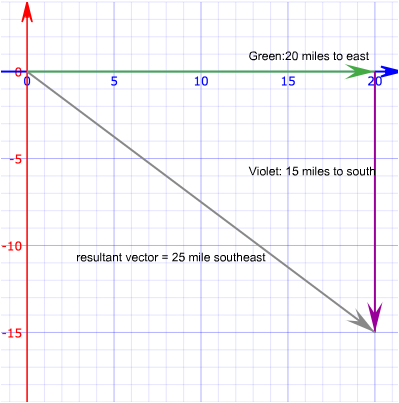Question #703a5
2 Answers
The two parts of her journey are at right angles, so we just need the length of the hypotenuse from Pythagoras' law.
Explanation:
The square of the hypotenuse is equal to the sum of the squares of the other two sides.
The displacement is shorter than the distance traveled.
Explanation:
In your example, we are dealing with two vectors where we have to add them to find the resultant disposition vector.
Inserting the 2 vectors as seen in the image, a right triangle is formed, where the hypotenuse (the side opposite to right angle is the resultant vector).
The resultant vector will be calculated using the Pythagorean Theorem which states that:
where a= hypotenuse
b,c= other sides
Applying the theorem:



